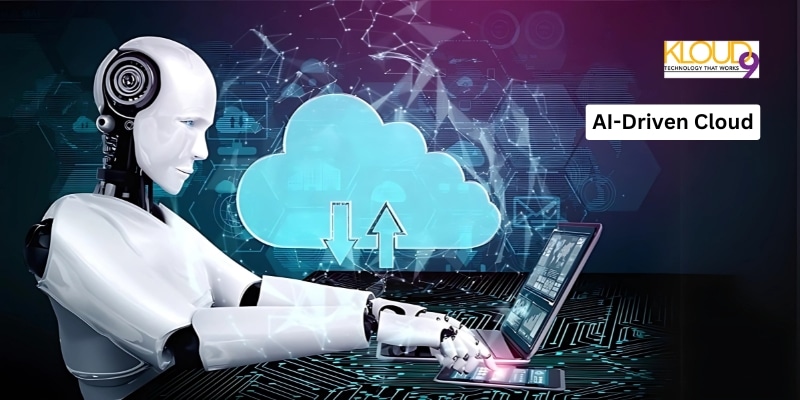Today's cloud computing transforms the pathway to business innovations, operations, and competition. As small and large businesses navigate the ever-improving, intricate digital landscape, business owners must either follow the trend or understand the concept of cloud computing and what to expect in the future.
Here, you will learn about the latest innovations, trends, and breakthrough technologies that bring life to cloud computing solutions and turn cloud storage into a robust catalyst for functional productivity, competitive benefits, and scalability.
IT consulting services and business owners looking to optimize cybersecurity solutions can leverage cloud computing solutions to improve their networks. This article covers cloud computing trends, including remote IT support and managed IT services, to help take businesses to the next level.
Cloud Computing Trends and Opportunities That Will Transform the Future of Your Organization
Cloud computing has transformed how we work and connect with people, transcending geographical boundaries and traditional IT vendor management. It is a technology that has enabled effortless global collaboration, allowing individuals and organizations to correlate anywhere, anytime.
The interesting thing about cloud storage is that businesses of all sizes are reaping the benefits of cloud-based solutions. These solutions deliver remarkable scalability, speed, and efficiency, minimizing the need for on-site IT equipment.
The cloud has gone beyond computing and storage. It includes many services, enables innovation, promotes collaboration, streamlines operations, and helps develop businesses.
Here are trends to watch in cloud computing technology that will impact your organization.
AI-Driven Cloud
Artificial intelligence (AI) will revolutionize the cloud by 2025 and beyond because it is already incorporated into multiple cloud solutions as features and services. It will become the fabric of cloud computing, changing every aspect, including scalability and intelligent resource management for enhanced detection and response to cybersecurity threats.
Cloud vendors have integrated built-in artificial intelligence services into their offerings, allowing businesses of all sizes to tap into predictive insights, automated workflows, and real-time data-driven decisions. As a result of this transformation, organizations can enhance their cloud services, reduce costs, and optimize their service delivery.
With AI-powered cloud computing solutions, resource time ensures applications perform optimally to eliminate overprovisioning. Additionally, leveraging machine learning provides advanced security by analyzing and automatically responding to cybersecurity threats as they arise.
The long-term benefit of adopting AI innovations in cloud computing is that your business will gain greater control, scalability, and decision-making capabilities in the cloud ecosystem. Also, as cloud computing evolves into AI-driven systems, big and small-sized businesses will have unparalleled productivity and efficiency, experience faster innovation, and gain deeper insight into data-driven decision-making. So, organizations need to invest in machine learning and AI-driven cloud infrastructure for long-term success.
Integrated Cloud Approach
The new norm in cloud computing is the integration of multi-cloud strategies that increase flexibility and allow organizations to leverage the stability of multiple cloud providers while mitigating risk.
Companies striving to overcome risk, foster resilience, and increase flexibility will focus more on adopting hybrid and multi-cloud approaches. Through this strategy, organizations can avoid depending on a single vendor and create an adaptable infrastructure that meets their specific goals and needs. Cloud infrastructure is no longer enough. So, the shift in technology ensures proper business management and success.
Democratization of Quantum Computing
Another trend to watch out for is the revolution of quantum computing. This groundbreaking technology utilizes quantum physics principles for data storage and processing. As this computing technology becomes more mainstream, companies can experience growth and development by tapping into unmatched computational power to solve complex problems and drive innovation. Aside from solving intricate problems in an organization, this trend is becoming a reality in creating new avenues for business discovery and growth, and industry leaders can democratize it.
Sustainable Cloud
Sustainability is another competitive advantage in cloud computing. It is a top trend for businesses that prefer cloud providers that prioritize environmental responsibility and those that invest more in reducing their carbon footprint. As an organization strives to meet sustainable cloud technology, business owners can expect a competitive benefit among partners and customers who want to see a greener technology practice as part of business commitments to the government and the environment.
Edge Computing
With the continuous growth of data, organizations must extensively seek practical approaches to data processing and analysis. Thanks to edge computing, this becomes easy, as it offers a solution that allows businesses to transform data into strategic business assets.
Edge computing differentiates itself from traditional cloud computing by processing data at the network's edge, speeding up real-time operators, and minimizing latency. This leads to enhanced user experience and faster data processing responses.
This trend is supported across many industries, including manufacturing, healthcare, and retail, to sustain IoT devices and AI-driven applications that require low response time. In healthcare, edge computing can rapidly process patients' data, enabling medical practitioners to provide timely diagnoses and effective treatments.
So, the future of cloud infrastructure relies on edge computing because it will close the gap between on-site infrastructure and cloud services, allowing organizations to undergo adaptability and digitization in the business revolution.
Security and Compliance
Rising cloud adoption has made managed security services and compliance top priorities for businesses. As cyber threats escalate and regulations evolve, organizations must proactively safeguard their cloud systems using innovative threat detection, permission management, and encryption. Data protection and privacy, driven by regulatory frameworks like GDPR, HIPAA, and SOC 2, have become essential through this innovative push.
Security and compliance also enable cloud providers to fortify their security capabilities by integrating zero-trust systems, improved identity governance systems, and AI-driven threat analysis. However, businesses also play a critical role in ensuring security, as they must adopt best practices, invest in employee training, and implement risk mitigation strategies to complement their employees' efforts.
Conclusion
The future of cloud computing is poised for significant growth and innovation in 2025 and beyond. Trends like AI-driven management, multi-cloud strategies, sustainable practices, IT security regulations, and the democratization of quantum and edge computing drive it. If you are a business owner or developer looking to stay above the competition, your company must adapt and leverage these advancements for optimal performance and efficiency.





You must be logged in to post a comment.